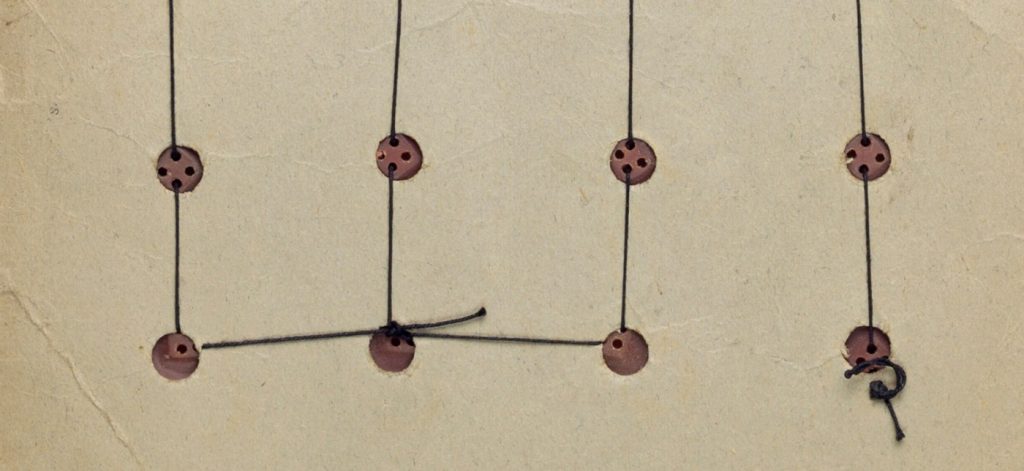
Photo Credit: The Whitworth
Cornelia Parker is renowned for her unique ability to identify possibilities of conceptual change in ordinary moments. The ability to turn the thing you are looking at completely upside down, and to witness it from the underbelly up. In Verso, Parker’s new show at the Whitworth, she uses the back of embroideries to create images that reveal the underside. Backs of embroideries are never in the spotlight; they create lines which are sporadic, abstract, and indifferent, each revealing the train of logic from the embroiderer who sewed the buttons onto the fabric. Focusing on the back of objects removes things from their context and in doing so exposes the imperfections in the process that the creator has tried to conceal. There is a certain beauty to these concealed imperfections that must not be ignored. At the opening of the exhibition, Parker begun her speech by stating that she wants her work to be thought of as found abstract drawings. They are created images that contrive to represent something important, yet what the importance of the images are she cannot quite grasp or put a finger on herself.
Parker went on to make a remark about this statement that appeared to resonate with the audience: “The unconscious mind has the capacity to know more than the conscious mind—and you must trust that.”
Looking back at Parker’s diverse, significant, and highly celebrated career to date, the thing that strikes me most is her ability to completely immerse herself in the projects she undertakes. There is an almost obsessive attention to detail: all parts, angles, and possible viewpoints of an object must be considered. This way of considering and drawing attention to all possible angles can be correlated back to her three-dimensional training and education as a sculptor and installation artist. The particularity in process required when working in three-dimensions has transferred into Parker’s conceptual aptitude at putting the underside of things into the spotlight.
The process of subverting attention away from the front of an object the designer has intended the viewer to witness can be very revealing as it exposes the method the designer has tried to hide. Parker’s aptitude at revealing the underside of things and the otherwise unseen made her a very interesting choice for 2017 election artist of the year. The role has seen Parker embark on her first social media experience, which you can follow on Instagram at @electionartist2017. As with all her other projects, she has completely immersed herself into what is a politically scary but exhilarating time—one in which the whole world order seems to be changing. She has taken on the role of devil’s advocate, an impartial witness and constant figure in the background of the campaign trail, producing a relentless stream of metaphorically loaded images on Instagram that focus on the connotations that come with the party colours. Parker described the election project as being alive with open possibility, and one through which she hopes to expose the fragility of relationships within interparty politics.
One of Parker’s political works that has particular significance in exposing any damage done by politicians over the years are her self-portraits with the chancellor’s famous budget briefcase. On Budget Day, the Chancellor holds their red budget box aloft on the steps of Downing Street for the media, before setting off to the Commons to deliver the statement. The budget box was made for William Gladstone in 1860 and is now covered in superficial scratches and damage. Parker’s self-portraits expose the black back of the budget box you never see, as the box was designed to sit on a table, and was never meant to be carried like a briefcase. On Budget Day, the Chancellor always presents the red side and hides the black underside of the box because of the connotations that come with the colour. It took Parker’s aptitude at revealing the unseen underbelly of objects to drag the dark side of the Budget Box into the public eye.
Filed under: Art & Photography

Comments